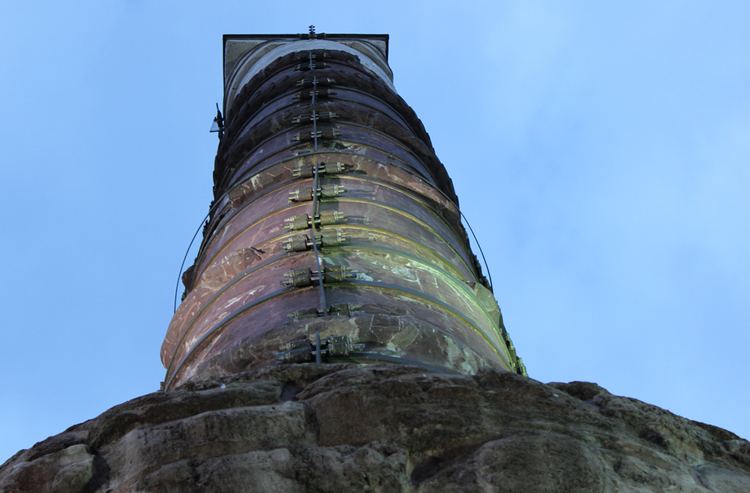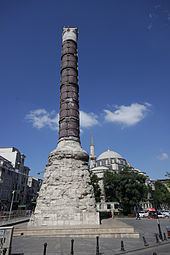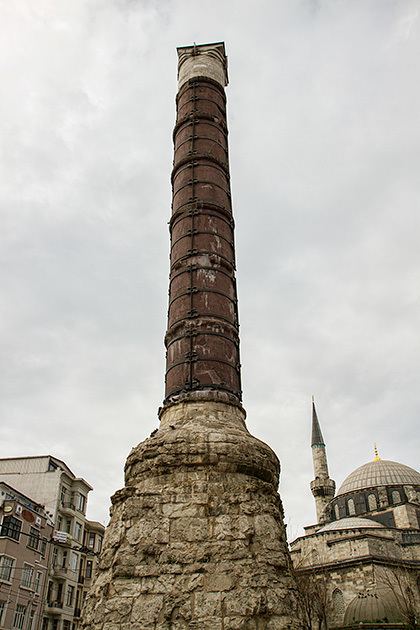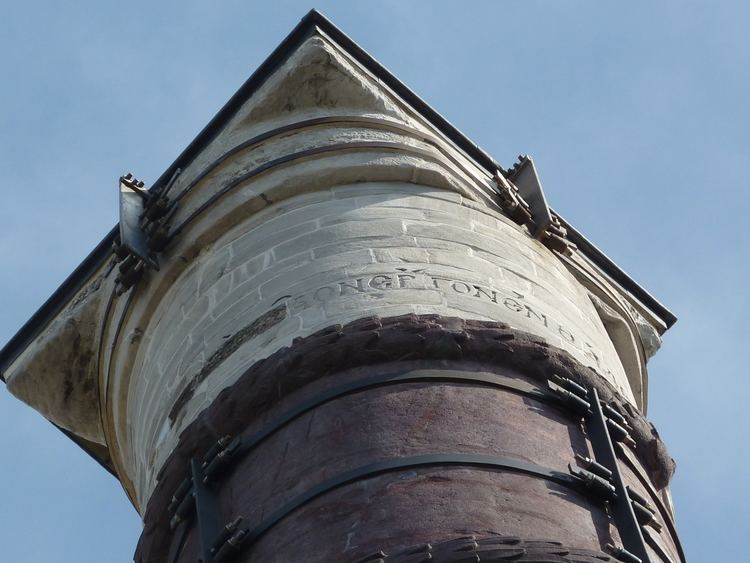 | ||
Similar Obelisk of Theodosius, Serpent Column, Hagia Irene, Hippodrome of Constantinople, Spice Bazaar | ||
Ormedikilitas column of constantine istanbul turkey
The Column of Constantine (Turkish: Çemberlitaş Sütunu, from çemberli 'hooped' and taş 'stone'), also known as the Burnt Stone or the Burnt Pillar, is a Roman monumental column constructed on the orders of the Roman emperor Constantine the Great in 330 AD. It commemorates the declaration of Byzantium (renamed by Constantine as Nova Roma) as the new capital city of the Roman Empire. The column is located on Yeniçeriler Caddesi in the eponymous neighborhood of Çemberlitaş, Fatih, central Istanbul, along the old Divan Yolu (the 'Road to the Imperial Council') between the Hippodrome of Constantinople (now Sultanahmet Square) and the Forum of Theodosius (now Beyazıt Square).
Contents
Column of constantine
History
The column was dedicated on May 11, 330 AD, with a mix of Christian and pagan ceremonies.
In Constantine's day the column was at the center of the Forum of Constantine (today known as Çemberlitaş Square), an oval forum situated outside the city walls in the vicinity of what may have been the west gate of Antoninia. On its erection, the column was 50 meters tall, constructed of several cylindrical porphyry blocks. The exact number of porphyry blocks is disputed, but common figures range from seven, up to as many as eleven. These blocks were surmounted by a statue of Constantine in the figure of Apollo. The orb he carried was said to contain a fragment of the True Cross. At the foot of the column was a sanctuary which contained relics allegedly from the crosses of the two thieves who were crucified with Jesus Christ at Calvary, the baskets from the loaves and fishes miracle, an alabaster ointment jar belonging to Mary Magdalene and used by her for anointing the head and feet of Jesus, and the palladium of ancient Rome (a wooden statue of Pallas Athena from Troy).

A strong gale in 1106 AD felled the statue and three of the upper cylinders of the column. Some years later, Byzantine emperor Manuel I Komnenos (reigned 1143-1180) placed a cross on top in place of the original statue and added a commemorative inscription that read "Faithful Manuel invigorated this holy work of art, which has been damaged by time". Bronze wreaths once covered the joints between the drums, but these were taken by the Latin Crusaders who plundered the city during the Fourth Crusade in 1204. The cross was removed by the Ottoman Turks after the fall of Constantinople in 1453.

Earthquakes and a fire in 1779 destroyed the neighborhood surrounding the column, leaving it with black scorch marks and earning it the name 'Burnt Column' (or, as referred to by Gibbon, the "burned pillar"). The column was restored by Abdülhamid I, who had the present masonry base added. The base was strengthened in 1779. The original platform of the column is 2.5 meters below ground.
Today

The Column of Constantine is one of the most important examples of Roman art in Istanbul. The column is 35 meters tall today. Restoration work has been under way since 1955. Cracks in the porphyry were filled and metal brackets renewed in 1972. Since 1985, the monuments of the historic peninsula of Istanbul, including the column, have been listed as a World Heritage Site.



